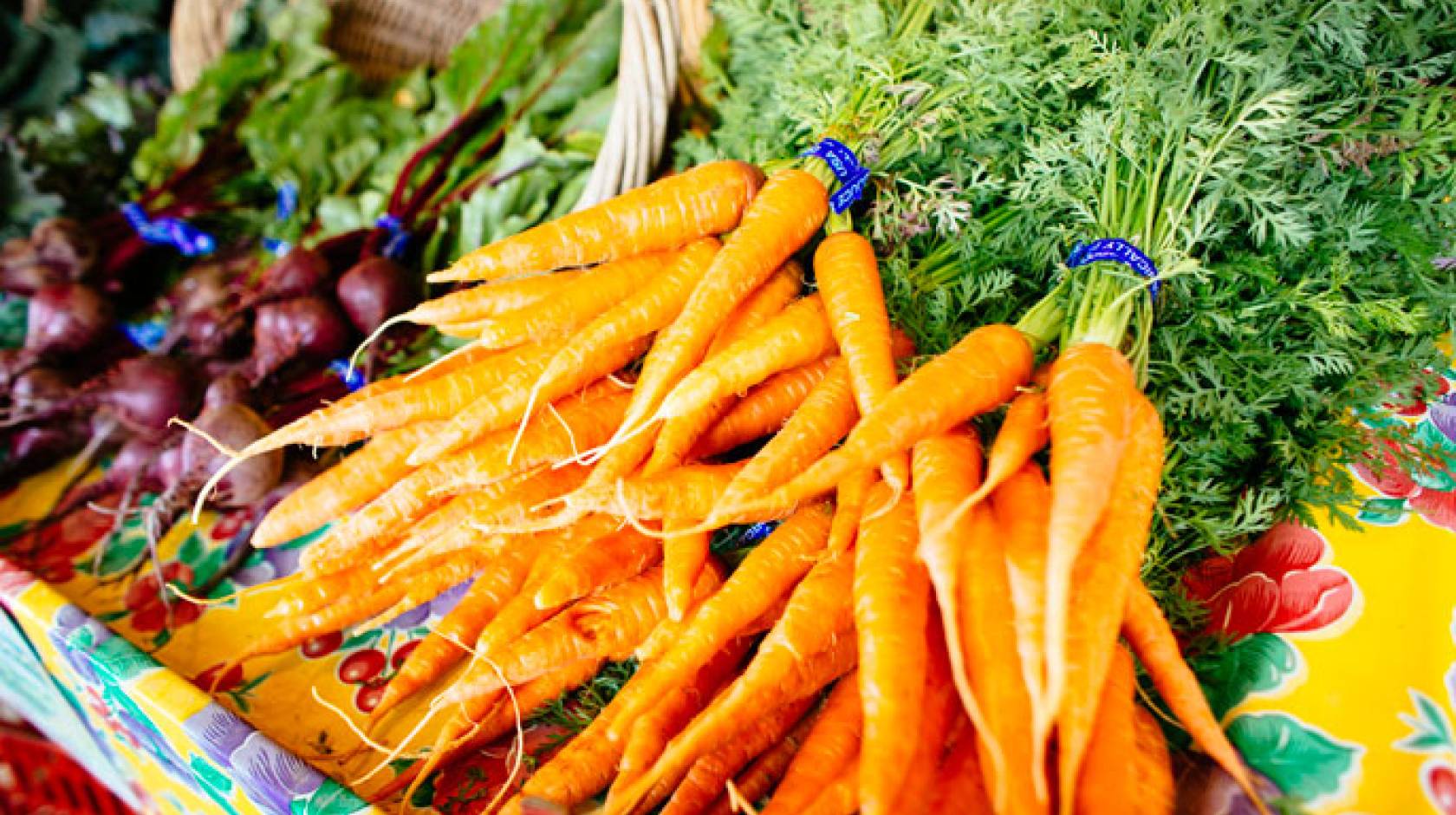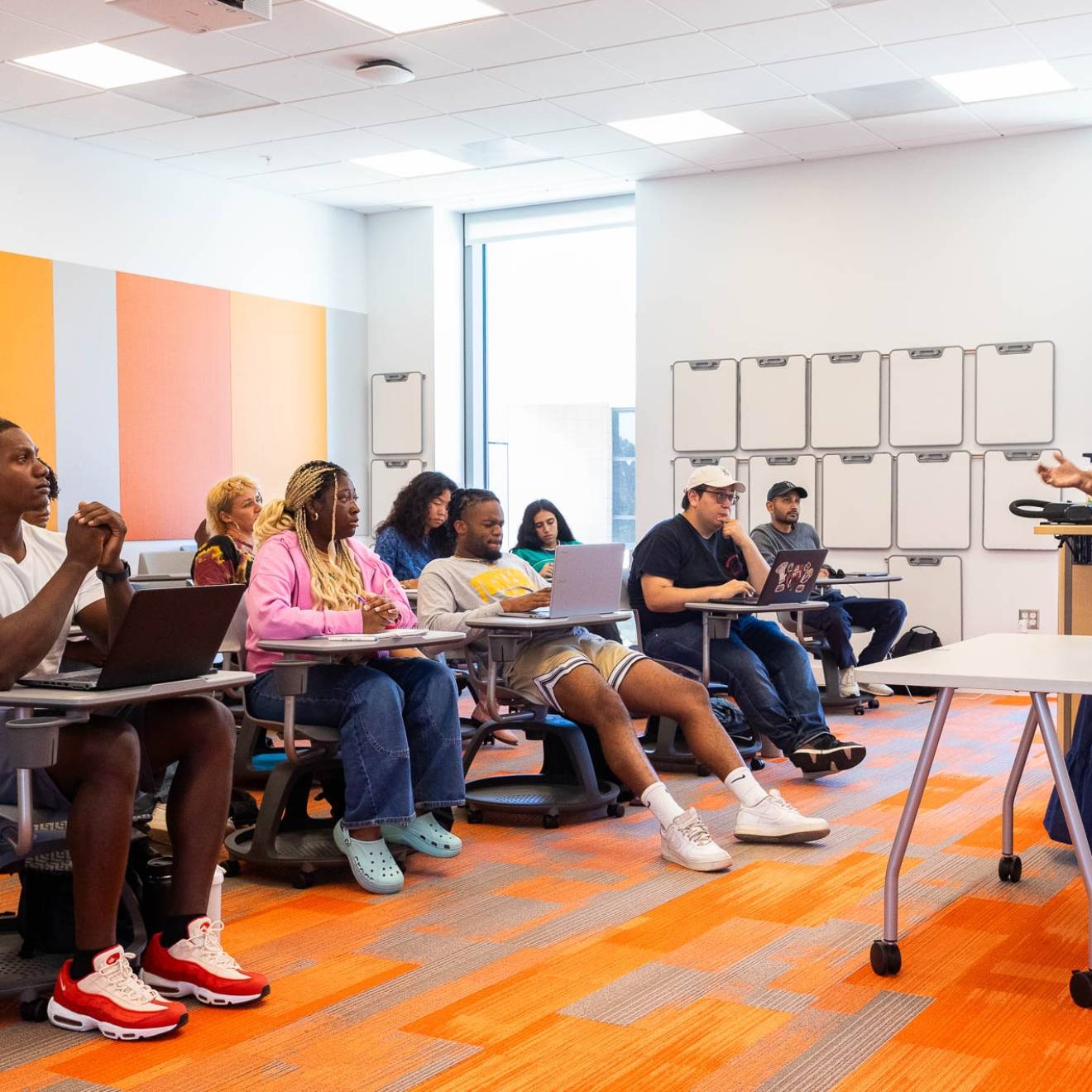Rose Hayden-Smith, UC Food Observer

There was a great deal of buzz last spring when a farmland mapping project by a UC Merced professor indicated that “most areas of the country could feed between 80 percent and 100 percent of their populations with food grown or raised within 50 miles.”
That researcher was Elliott Campbell. His research study – “The Large Potential of Local Croplands to Meet Food Demand in the United States” – appeared as the cover story of Frontiers in Ecology and the Environment, the journal of the Ecological Society of America (the largest organization of professional ecologists, with a membership of more than 10,000 scientists). The study immediately generated comment, including positive accolades from author and influencer Michael Pollan (also a UC professor). Many have noted the importance of the study in filling a research gap about local food.
About Dr. Elliott Campbell: Elliott’s research emphasizes the use of spatial analysis and environmental modeling to explore environmental policy, urban agroecology and watershed sustainability. This work has appeared in media ranging from NPR’s “Morning Edition” to The Economist and has provided a basis for consultations to the U.S. Environmental Protection Agency (EPA) and other government agencies. Elliott serves as associate editor to Frontiers in Ecology and the Environment. He is the recipient of the National Science Foundation CAREER award (he received more than $400,000 to assess “the capacity of abandoned agricultural lands to generate crops used to produce biofuels”). Elliott received his BS and MS from Stanford University and his PhD from the University of Iowa. He is currently an associate professor of Environmental Engineering at UC Merced.
Q: Your research on local foods is filling a gap. What’s been most surprising to you about that?

Credit: UC Merced
Elliott: Going into this study, I expected some potential for local food systems and certainly some drawbacks. The overall result was very positive. It’s drawn a strong response from the public, the media and the academic community. And it definitely has the potential to shape public policy. It’s exciting.
Q: What kinds of public policies work are you seeing around local food?
Elliott: Currently – especially at the city level – a lot of policy makers are exploring ideas about how to support local food projects. I think there are a few cities where it is really taking off; many more should be replicating that. The research we’re doing shows that this isn’t something that has to be limited to Portland or San Francisco. Rather, the local food model could take off more broadly.
Q: Has there been anything surprising about the local food work in your region [California’s Central Valley]?
Elliott: It’s been interesting to find a big drive for local food in the Central Valley. There is a Food Commons project in Fresno that’s particularly interesting. The group is pulling together systems and infrastructure to make this a meaningful system. After we published this paper, the Food Commons group got in contact with us and we began to talk about bridging the gap between our research and their knowledge needs. There are pockets of activity – Fresno being one of them – where there is a strong movement for local, farm-fresh food.
At UC Merced, there is a very interdisciplinary – a systems – approach to our research and program work. For example, the environmental engineering work is also part of a broader group on campus called “environmental systems.” I sit in meetings with people from a very broad variety of backgrounds. UC Merced has tried to go about things differently. Again, one thing is to create a culture that nurtures interdisciplinary activities. Committees for PhD students, for example, are really mixed with a wide range of disciplinary backgrounds represented.
This type of environment fosters the kind of research our team did. The local food research required me to think about problems that weren’t immediately in my domain, but which could benefit from methodologies my lab developed. Local food study wasn’t part of my tenure vision; I was working on maps of agriculture and thinking about bioenergy sustainability. There is a lot of research work to try to understand where biofuels are headed and to direct those efforts in the most sustainable trajectory possible. I realized that the tools we were using to address this problem in biofuels could be helpful in addressing unanswered but important questions for local food.
This kind of research could happen anywhere, probably, but to the extent that a university creates a culture of interaction between departments, that sort of thinking is going to be fostered. UC Merced has done that really well.
Q: It’s an election year and presidential candidates are in Iowa. What’s your take on what they might talk about?
Elliott: One thing will be the federal policy around bioenergy. With candidates in Iowa, biofuels are a huge thing to talk about. I spent some time in Iowa and I remember that many people agreed that biofuels were good, despite differing backgrounds. It is a great time to be thinking about biofuels.
Q: What might be a constructive narrative about biofuels in relation to food production? What should people know?
Elliott: As a policy maker, the number one thing about a safe pathway for biofuels is what land is going to be used to produce feedstock (corn kernels, actual grasses and other types of plant material). The land we use to create that kind of material is central to whether biofuels are going to be protective of – or harmful to – the environment.
If you use the land that’s being currently used to produce food, then you not only have this dire problem of creating a food-fuel competition, but it can also inadvertently lead to some very significant damage to the global environment.
The global food system is actually exceptionally good at feeding people, but this has come at great expense to the environment. The more pressure we put on the food system, the more pressure we put on our precious, dwindling environmental resources. A huge amount of land is allocated for the production of food for humans or livestock.
People get confused. They are so supportive of biofuels, but are not willing to explain the story. Food versus fuel is a way to confuse the public, but it’s not the bottom line. What land you use to get plant material from is more central, in my opinion. If you convert a human food field to biofuels, you’re competing.
The effects of climate change on crop productivity impacts biofuels; it is also an important topic to discuss. It is interesting to the general public right now. People are interested in local food for a lot of reasons (personal and environmental).
It’s really important to engage with the public from a place where they already have strong interest. In this case, local food can be nice bridge to understanding the impacts of agriculture on the environment.
Q: What are you working on now?
Elliott: The first study that got a lot of news was about the potential of local food. I’m building on that. The work I have in progress now is thinking about local food and the environmental impacts associated with different locations. In Coastal California, for example, the depth of groundwater can mean that environmental impacts of raising that water – including electricity – are formidable. In places where there is shallow groundwater, those impacts could be less. There are trade offs.
My second and third studies use this framework to talk about some of these larger issues.

Credit: UC Merced, Elliott Campbell.
Q: What’s worrying you?
Elliott: Two things. Both have to do with climate change. Agriculture is a big driver of climate change; it contributes to the emission of green house gasses in a huge way. And simultaneously, agriculture will suffer the consequences of climate change. We will have a harder time providing food for the world in the future.
Q: What about opportunities and threats for California agriculture?
Elliott: The opportunities and threats for California agriculture are really interesting because of the water-energy nexus. I’ve been thinking about what role that plays in our food production. One example, again, is that really deep groundwater tables lead to a very high carbon footprint for food because of the energy that’s required to lift that water to the surface.
In terms of opportunities, there are quite a few. One is local food. I think about the carbon footprint of food in California and two things come to mind. One, I’ve mentioned: that’s the water and the energy required to get water to crops. The second is the energy required to produce the fertilizers.
One of the neat things about local food production is that it can have synergies in addressing these two problems. Cities could be a great source of nutrients for compost that could be used as fertilizers on farms. If you put the two things next to each other, recycling could work and it could have a big impact on the carbon footprint of the food we produce.
Q: What’s inspiring you?
Elliott: I find it very inspiring that people are really interested in food, in general, and are also interested in energy and water. These are issues that are of concern to the public and policy makers. And it’s something our UC system is really good at exploring and understanding. I find the shared interests of scientists and public policy makers particularly exciting.
Q: If you had a magic wand and could change something in the food system, what would it be?
Elliott: It’s an incredibly complicated system…there are a million different answers! When it comes to food there is a huge first order issue that affects how vulnerable the environment is to food production…and the extent to which our food system is reliant on plants versus animals. To do one thing is such a challenge. In this case the system does have a huge sensitivity to the extent to which we can shift our diet more to plants. If we could get people to do that, the positive impacts would be significant.
I’m very excited about the potential of the local food movement. Getting people to shift diets is hard…it’s difficult to shift eating habits. The local food movement has teeth here…it’s actually making vegetables exciting! There are local meats and cheeses, too. But it’s pretty extraordinary that the local food movement has redirected people to plants; there is some anecdotal evidence to support that. It gives me a lot of hope.
A really powerful message that seemed obvious to me is that a chunk of the environmental sustainability community has dismissed local food as a distraction, yet leans heavily on the idea that we need to eat more plants. It’s possible that this movement that has been dismissed by some might contain a seed for getting us through a difficult place and closer to sustainability.
Editor’s Note: Campbell’s work was funded in part by the UC Global Food Initiative, which seeks to harness the university’s resources to address one of the most pressing issues of our time: how to sustainably and nutritiously feed a growing world population.

